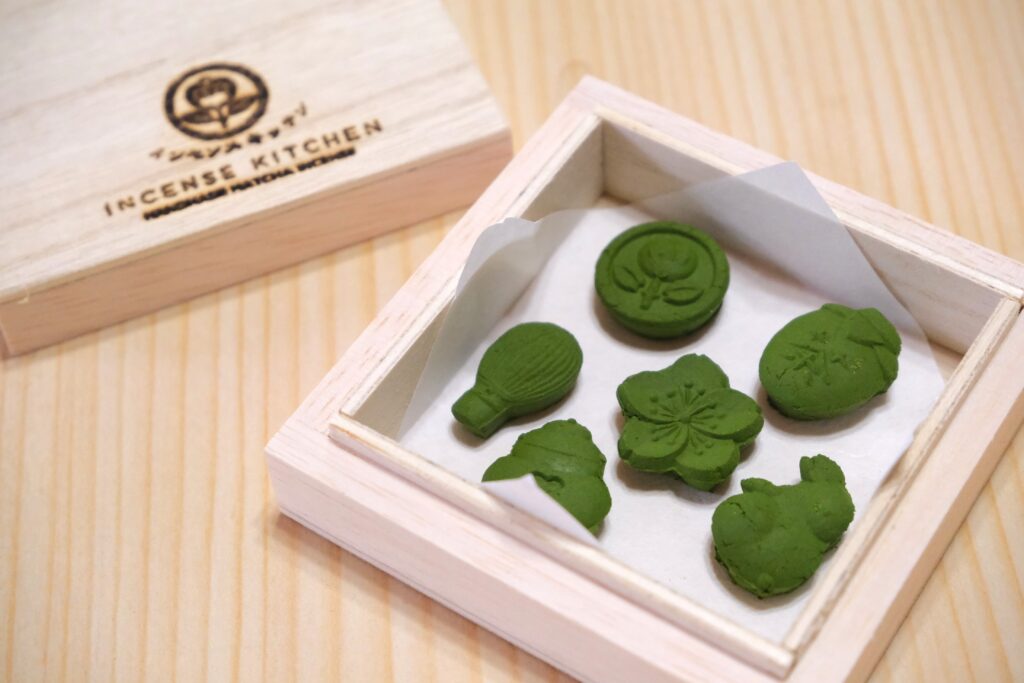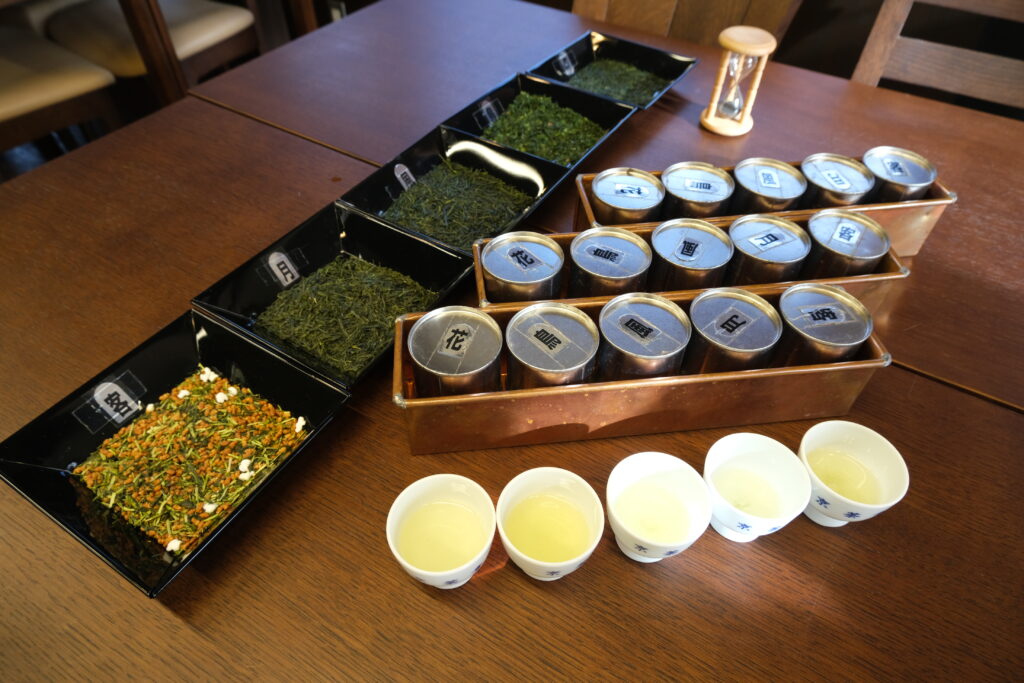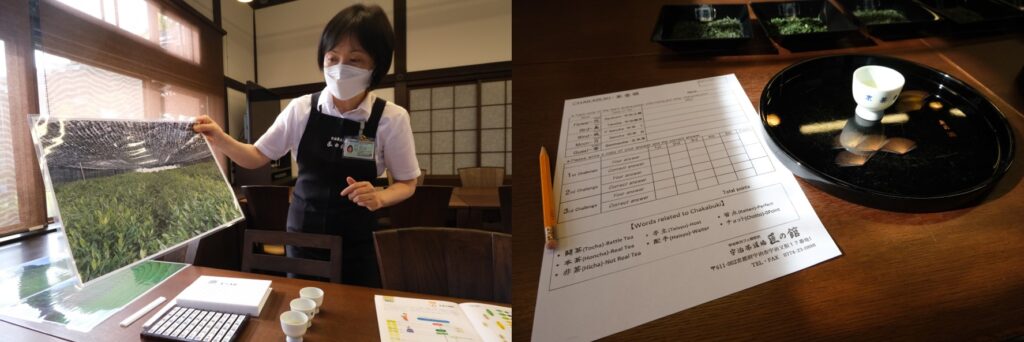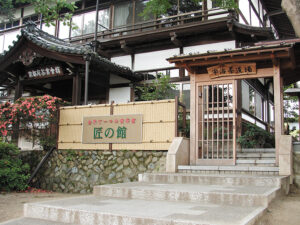Incense Kitchen – Make Matcha Incense
In a quiet room of Eshin-in Temple, Kyoko Goto offers a unique and exquisite experience. She has studied traditional kodo (the art of appreciating Japanese incense), and developed her own method for crafting matcha incense. She offers workshops where you can learn to make your own matcha incense. (Reservations required. For English support, please apply at least one week in advance.)

With natural ingredients traditionally used in temple incense sticks, you can create refreshing green incense in charming designs, such as symbols of Uji, Kyoto, and Japan. For example, a rabbit, a cherry blossom, and a bowl of tea. The wooden molds are specially crafted, based on traditional Japanese sweet molds. Both incense scented only with matcha, and an opportunity to craft incense using such a wooden mold, are very rare.
The incense is not lit directly; instead, it is gently warmed using a tealight candle. It releases no smoke, only the relaxing aroma of the matcha. The delightful shape remains intact, so even after losing its fragrance, it can be used as a decorative item or an aroma stone.

The matcha is fresh, sourced directly from tea factories and farmers in Uji, under hygienic conditions. This includes matcha collected from the air circulation filters in the tea factories. The manufacturing process inevitably produces some high-quality matcha that is not sold for consumption. Currently, only this type of matcha is used here. You’ll put it in a mortar, and mix it with water and powdered Japanese bay tree bark. Using a pestle, blend the ingredients together, knead it thoroughly, and then firmly press it into a mold. This process is very tactile, and Kyoko is certain that even children, who are not very interested in temples and shrines, can enjoy it very much.

Eshin-in Temple is located in the sightseeing area of Uji, yet you can enjoy the tranquil and beautiful atmosphere, with peaceful views of the lush green garden and shoji screens (traditional sliding doors/partitions). The temple is also known as “The Flower Temple,” and you can enjoy a variety of flowers depending on the season.
The incense-making experience includes a stylish incense warmer designed by Kyoko. It is pocketable when folded, perfect for travelers. Also, there are options of a matcha-green-tea-whisking experience and a lunch using Uji tea at a traditional Japanese restaurant. Low chair seating is available, too.
Opening days and hours: Check the website
Address: 67 Ujiyamada, Uji City, Kyoto (Eshin-in Temple)
Access: 10 min. on foot from Keihan Uji Station, 15 min. on foot from JR Uji Station
Website: https://incensekitchen.com
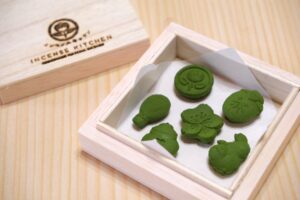
Incense Kitchen
Incense Kitchen offers a great experience of making incense with the aroma of matcha green tea. (Reservations are required. For English support, please apply at least one week in advance.) Why not try …
